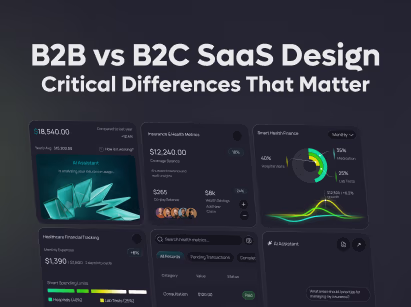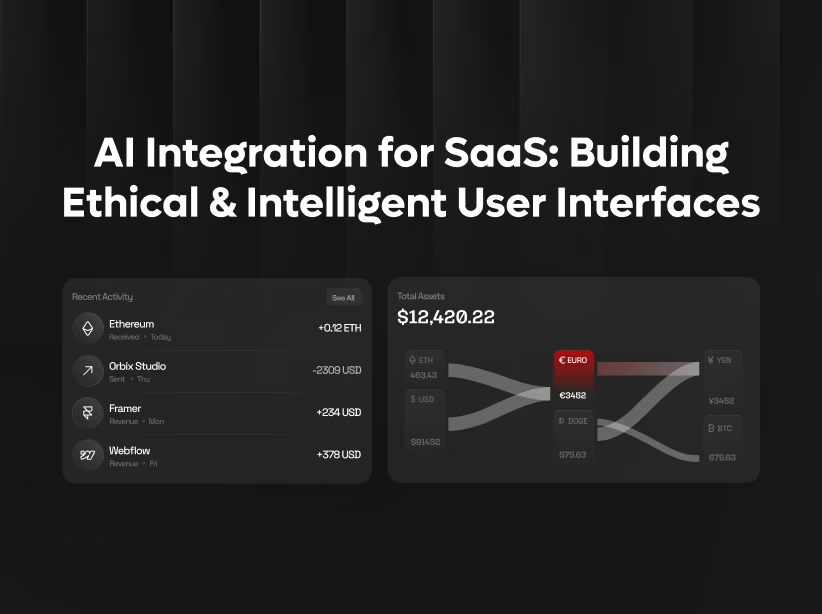Table of Contents
- The High Stakes of SaaS Pricing Page Design
- Psychology Element: Decoy Pricing Anchoring
- Psychology Element: Transparency and Trust Signals
- Psychology Element 5: Strategic Color Psychology
- Psychology Element: Value Communication Over Feature Lists
- Measuring Pricing Page Success
- Quick Implementation Checklist
- Conclusion: Pricing Psychology as Conversion Strategy

Your SaaS pricing page receives thousands of monthly visitors but converts only 2-3%. Meanwhile, competitors with identical products achieve 5-8% conversion rates. The difference? Psychology-driven design. SaaS pricing pages are the final conversion funnel stage where purchase intent transforms into action—or abandonment. Strategic implementation of psychological principles through design converts indecisive visitors into paying customers.
Research shows that pricing page redesigns implementing psychology-backed strategies increase trial signups by 35-50%, improve plan selection clarity by 40%, and reduce pricing-related support questions by 60%. Yet most SaaS companies treat pricing pages as afterthoughts, missing millions in conversion revenue. This comprehensive guide reveals seven psychology-driven design elements that transform underperforming pricing pages into conversion machines, backed by behavioral science and validated through thousands of SaaS tests.
The High Stakes of SaaS Pricing Page Design
Why pricing pages matter:
SaaS pricing pages influence multi-million dollar decisions for enterprise buyers and determine whether bootstrapped startups scale or stagnate. A single percentage point improvement in pricing page conversion for high-touch SaaS can generate $100,000+ in additional annual revenue. Even for self-serve SaaS, 2-3% conversion improvements translate directly to 30-50% revenue increases.
The conversion psychology gap:
Most SaaS companies invest heavily in landing pages, product tours, and sales collateral yet neglect pricing page psychology. This oversight leaves substantial revenue on the table. Pricing pages require distinct psychological approaches compared to other marketing pages—visitors arriving at pricing pages exhibit high purchase intent but face maximum decision anxiety requiring specific design treatments reducing friction.
Psychology Element 1: Decoy Pricing Anchoring
Pricing psychology's most powerful tool is strategic anchoring—presenting high-priced options that make mid-tier plans feel like optimal value.
The Decoy Effect Science
The decoy effect (discovered by Amos Tversky) shows humans judge value relationally, not absolutely. Presenting three options where one is clearly superior to another (but inferior to a third) increases selection of the middle option—exactly where you want upgrades happening.
Implementation Strategy
Three-tier structure with clear Good/Better/Best hierarchy establishing comparative value relationships.
Pricing gap emphasis where middle tier costs 20-30% more than basic but offers 100%+ feature value increase, making it appear as superior choice.
Premium tier visibility pricing the highest tier dramatically above mid-tier making mid-tier feel like exceptional value despite being significantly above basic.
Feature comparison tables showing exactly what additional value each tier provides, making upgrade justification obvious.
Anchoring psychology: When Enterprise plan costs $999/month, Professional at $299 feels like obvious value. Remove Enterprise, and $299 feels expensive.
Real-World Results
Example: Slack tested pricing with and without premium tier. Adding Enterprise plan at $500/month increased Professional tier (previously $99) conversions 28% despite zero feature changes. Visitors anchored to Enterprise pricing perceived Professional as exceptional value.
Implementation: Place most expensive tier prominently (top of page, right side, or highlighted) even if few customers convert there. Anchoring effect works through visibility alone.
Conversion Impact
Proper decoy pricing achieves:
- 25-35% increase in mid-tier upgrades through anchoring effects
- 40% higher average revenue per user through better tier selection
- Reduced decision paralysis when comparison clearly favors intended option
Psychology Element 2: Recommended Plan Highlighting
Humans seek social proof regarding decisions. Highlighting recommended plans leverages social comparison, reducing decision anxiety and guiding uncertain visitors.
The Authority Effect
Robert Cialdini's research shows humans follow authority and recommendations from trusted sources. When design emphasizes a specific plan as "recommended" or "most popular," visitors interpret this as authoritative guidance, driving selection.
Implementation Strategy
Visual emphasis with badges, "Most Popular" labels, color highlighting, or lift effect making recommended plan stand out physically.
Social proof integration showing "Chosen by 65% of customers" or "Most popular plan" leveraging peer behavior as decision guide.
Clear recommendation rationale explaining why specific plan recommended: "Most Popular for Growing Teams" communicates who benefits from each tier.
Subtle persuasion avoiding aggressive sales language in favor of gentle guidance respecting visitor autonomy.
Strategic recommendation placement positioning recommended plan center (natural focal point), or right side (Western reading pattern) increasing attention.
Real-World Results
Case Study: B2B SaaS tool restructured pricing page highlighting middle tier with "Recommended for Teams" badge. Conversion to middle tier increased 44%, while total signups jumped 27% through reduced decision friction.
Psychology at work: Visitors seeking guidance select "recommended" plan unconsciously, reducing cognitive load of comparing feature matrixes.
Conversion Impact
Proper recommendation highlighting drives:
- 35-48% increase in recommended tier selection through authority effect
- 22-30% overall conversion improvement reducing decision paralysis
- 45% fewer pricing-related support questions as recommendations clarify best fit
Psychology Element 3: Transparency and Trust Signals
Pricing page visitors harbor suspicion: "What's the catch? Will hidden fees appear at checkout? Can I actually cancel?" Transparent pricing addressing these fears converts skeptics into customers.
Building Trust Through Transparency
Trust research shows explicit honesty about pricing, terms, and conditions increases conversion 15-25% by reducing perceived risk and friction.
Implementation Strategy
Explicit feature lists showing exactly what's included and excluded—no vague "premium support" without definition.
Honest limitations stating clearly where plans differ: "Unlimited users in Professional, 100 user limit in Basic" prevents surprise cancellations at signup.
No surprise costs displaying monthly and annual pricing clearly with total cost calculations. Hidden annual billing hurts conversion.
Money-back guarantees stating "30-day money-back guarantee, no questions asked" reduce signup risk perception by 30-40%.
Cancel anytime explicitly stating no contracts required builds confidence and reduces signup hesitation.
Security badges displaying SSL, data encryption, compliance certifications (SOC 2, GDPR) reinforcing trustworthiness.
Customer testimonials with names, logos, and specific results (not generic praise) provide social proof addressing skepticism.
FAQ addressing concerns proactively answering "What happens if I cancel? Can I downgrade? Do you charge per user?" prevents support friction.
Real-World Results
Example: Adding money-back guarantee to pricing page increased conversions 16%. Stating "Cancel anytime" without penalty increased trial starts 23%. Together, transparency features boosted conversions 34%.
Psychology at work: Removing uncertainty reduces friction, converting fence-sitters into action-takers.
Conversion Impact
Comprehensive trust signals deliver:
- 20-35% conversion improvement through risk reduction
- 40% decrease in refund requests via clear expectations
- 50%+ reduction in support tickets explaining policies
Psychology Element 4: Scarcity and Urgency Tactics
Scarcity (limited availability) and urgency (time limits) leverage loss aversion—humans fear missing opportunities more than gaining them. Applied ethically, these drive conversions significantly.
The Loss Aversion Principle
Behavioral economics research shows humans weight losses roughly twice as heavily as equivalent gains. Authentic scarcity/urgency taps into this psychology, motivating immediate action.
Implementation Strategy
Limited-time pricing "Early Bird pricing ends in 30 days, then increases to $299." Countdown timers provide visual urgency reinforcing deadline awareness.
Launch pricing "Founding member pricing: $99/month, increases to $199 when public." Excludes current customers (no sudden increase), applies only to new signups.
Volume limits "Only 10 Enterprise spots remaining at this price" (when genuine) creates authentic scarcity without manipulation.
Tier availability rarely removing plan tiers but occasionally limiting premium features during specified periods creates urgency.
Honest scarcity only never fake urgency or availability—users detect manipulation, destroying trust permanently.
Real-World Results
Case Study: SaaS tool added countdown timer showing "Founding member pricing expires in 12 days." Trial signups increased 31% during countdown period. Removing timer dropped conversions back 30%, proving urgency impact.
Critical: Honesty is essential. Fake scarcity (perpetual "limited time" offers) trains users to ignore urgency, destroying future effectiveness.
Conversion Impact
Authentic scarcity tactics achieve:
- 25-40% increase in signup velocity during limited periods
- $30-50/customer higher commitment through investment psychology
- Prevention of indefinite procrastination converting fence-sitters
Psychology Element 5: Strategic Color Psychology
Colors influence psychology and behavior significantly. Strategic pricing page colors increase conversions by leveraging psychological associations.
Color Psychology Fundamentals
- Green: Growth, positivity, money—ideal for CTAs and recommended plans
- Red: Urgency, action, attention—effective for high-value CTAs or limited-time offers
- Blue: Trust, professionalism, calm—suitable for B2B SaaS establishing credibility
- Orange: Friendly, encouraging, approachable—effective for SMB-focused products
- Purple: Premium, luxury, innovation—positions higher-tier plans as special
Implementation Strategy
CTA button colors contrasting with page background and standing out immediately. Green or red (high contrast) outperform blue/gray by 20-35%.
Recommended plan highlighting using strategic colors to emphasize suggested tier without aggressive emphasis.
Feature emphasis using color for high-value differentiators drawing attention to tier distinctions.
Consistency with branding maintaining brand colors while strategically emphasizing conversion moments.
Accessibility always ensuring sufficient contrast (7:1 minimum for colorblind users) and testing color effectiveness.
Real-World Results
Example: Changing CTA button from gray to green increased conversions 21%. Adding contrasting color to recommended tier increased middle-tier selection 18%. Color psychology compounds through strategic application.
Conversion Impact
Strategic color implementation achieves:
- 15-25% CTA click-through improvement through visual emphasis
- 18-30% higher recommended plan selection via highlighting
- 10-15% overall conversion increase from optimized visual hierarchy
Psychology Element 6: Simplified Decision Architecture
Humans exhibit choice paralysis with excessive options. Strategic limitation of choices (while appearing comprehensive) increases conversion by reducing decision friction.
The Paradox of Choice
Barry Schwartz's research shows too many choices paralyze decision-making. SaaS pricing pages with 5-7 tiers confuse; three tiers with clear differentiation convert better.
Implementation Strategy
Three core tiers providing clear Good/Better/Best progression without excessive options.
Clear audience messaging communicating who each tier serves: "Starter for Individuals," "Professional for Teams," "Enterprise for Enterprises."
Feature clarity showing exactly what differentiates tiers—not feature lists but upgrade value explanations.
Comparison toggles monthly/annual pricing switches at top enabling easy comparison without overwhelming information.
Progressive disclosure hiding granular feature details behind expandable sections for interested visitors while keeping simple pricing prominent.
Tier positioning spacing plans visually distinct preventing confusion about which features apply where.
Real-World Results
Case Study: SaaS tool reduced from 7 tiers to 3 focused tiers. Initial concern about missing revenue proved wrong—conversions increased 31%, with no significant revenue loss. Simpler choices increased conversion more than marginal tier revenue.
Psychology at work: Simplified architecture reduces cognitive load, enabling faster confident decisions.
Conversion Impact
Proper decision architecture delivers:
- 25-40% conversion improvement through reduced choice paralysis
- Higher tier selection rates as users confidently choose clear options
- Faster decision-making visible in reduced page dwell time
Psychology Element 7: Value Communication Over Feature Lists
Humans don't buy features—they buy outcomes and benefits. Pricing pages emphasizing value and results convert significantly better than those listing technical specifications.
The Outcome Bias
Research shows humans prioritize outcomes (what they'll accomplish) over features (how it works). Pricing pages leveraging this psychological bias convert better by addressing customer motivations.
Implementation Strategy
Benefit-focused copy avoiding "unlimited users, advanced analytics, API access" in favor of "Manage entire team in one place, discover growth opportunities instantly, integrate with your favorite tools."
Outcome statements explaining results customers achieve: "Process 80% faster" instead of "Async processing," "Reduce churn by 35%" instead of "Predictive analytics."
Job-to-be-done framing positioning plans around customer goals not feature lists.
Use case callouts showing specific scenarios each tier addresses: "Perfect for marketing teams managing multiple campaigns."
Problem-solution alignment connecting features to specific problems solved.
Success stories brief examples showing outcomes achieved through similar plans.
Real-World Results
Example: Finance SaaS restructured pricing page from feature-heavy to outcome-focused copy. "Automated invoice reconciliation" became "Save 10 hours weekly on accounting tasks." Conversions increased 27% without changing features.
Psychology at work: Customers envision themselves achieving promised outcomes, increasing purchase motivation.
Conversion Impact
Value-focused communication achieves:
- 20-35% conversion improvement through outcome focus
- Higher willingness to pay when benefits clearly communicated
- 40-50% reduction in feature-related support questions
Common SaaS Pricing Page Mistakes Destroying Conversions
Hiding pricing behind "Contact Sales" creates friction killing conversions. Transparency converts better than barriers.
Overwhelming feature lists with 50+ bullet points paralyze rather than inform. Focus on 3-5 key differentiators.
Ignoring mobile optimization where 40%+ of B2B pricing page traffic originates. Ensure responsive design and touch-friendly CTAs.
Vague feature descriptions like "Premium support" without definition create confusion. Specify exactly what included.
No trust signals or social proof appears risky to potential customers. Include testimonials, logos, guarantees.
Poor CTA visibility burying signup buttons or using weak copy ("Learn More" instead of "Start Free Trial") reduces conversions.
Unclear upgrade paths confusing customers about whether switching plans mid-cycle maintains paid time reduces conversion confidence.
Pricing only annual without monthly option alienates price-sensitive customers. Offer both with strategic discounts for commitment.
Measuring Pricing Page Success
Track these metrics validating optimization impact:
Conversion metrics:
- Pricing page conversion rate (target: 5-8%)
- Trial signup rate
- Paid conversion rate
- Plan selection distribution
Engagement metrics:
- Time on pricing page
- Scroll depth (do visitors see all plans?)
- FAQ interaction rate
- CTA click-through rate
Financial metrics:
- Trial-to-paid conversion
- Average revenue per user
- Customer lifetime value
- Trial abandonment rate
Behavioral metrics:
- Support questions about pricing
- Refund request rate
- Feature requests by plan tier
- Plan upgrade rate
Quick Implementation Checklist
Immediate wins (implement this week):
- ✓ Add "Most Popular" badge to recommended tier
- ✓ Display money-back guarantee prominently
- ✓ Change CTA color to high-contrast green/red
- ✓ Add trust badges (SSL, certifications)
- ✓ Simplify to three core tiers if more exist
Strategic improvements (implement this month):
- ✓ Rewrite copy emphasizing outcomes over features
- ✓ Restructure for psychological hierarchy
- ✓ Add countdown timer if offering limited promotion
- ✓ Implement comparison toggle for monthly/annual
- ✓ Add customer testimonials with specific results
Advanced optimization (ongoing):
- ✓ A/B test pricing structures and messaging
- ✓ Segment pricing pages by customer type
- ✓ Implement trust signals specific to industry
- ✓ Add personalization based on traffic source
- ✓ Monitor metrics weekly, iterate continuously
Conclusion: Pricing Psychology as Conversion Strategy
SaaS pricing pages aren't just informational—they're psychological environments where visitor hesitation transforms into confident purchasing or procrastination. Strategic application of seven psychology-driven design elements: decoy pricing anchoring, recommended plan highlighting, transparency and trust signals, scarcity/urgency tactics, strategic color psychology, simplified decision architecture, and value communication over features—consistently increase conversions by 35-50%.
The investment in psychology-driven pricing page optimization delivers immediate, measurable ROI. A single percentage point conversion improvement for growing SaaS generates $50,000-$500,000+ in annual revenue depending on scale. Every psychological principle implemented compounds conversions, creating sustainable competitive advantages through superior user psychology.
Yet most SaaS companies leave this revenue on the table through neglect. The companies capturing these gains through psychology-backed pricing pages achieve market leadership while competitors struggle with marginal conversions.
At Orbix Studio, we specialize in psychology-driven SaaS pricing page design that converts. Our methodology combines behavioral science, conversion optimization expertise, and rigorous A/B testing to transform underperforming pricing pages into revenue machines. We've helped SaaS companies increase pricing page conversions by 35-50%, generating millions in additional revenue.
Ready to increase your SaaS pricing page conversions by 35-50%?
Free SaaS Pricing Page Conversion Audit
Get a complimentary psychology-focused analysis:
✓ Current conversion rate benchmarking
✓ Psychological element gap assessment
✓ Competitor pricing page analysis
✓ Prioritized optimization recommendations
✓ Estimated conversion lift potential
✓ Implementation roadmap with quick wins
Limited to 5 SaaS companies monthly | Value: $6,000
Fresh UI/UX Ideas, Straight to Your Inbox





